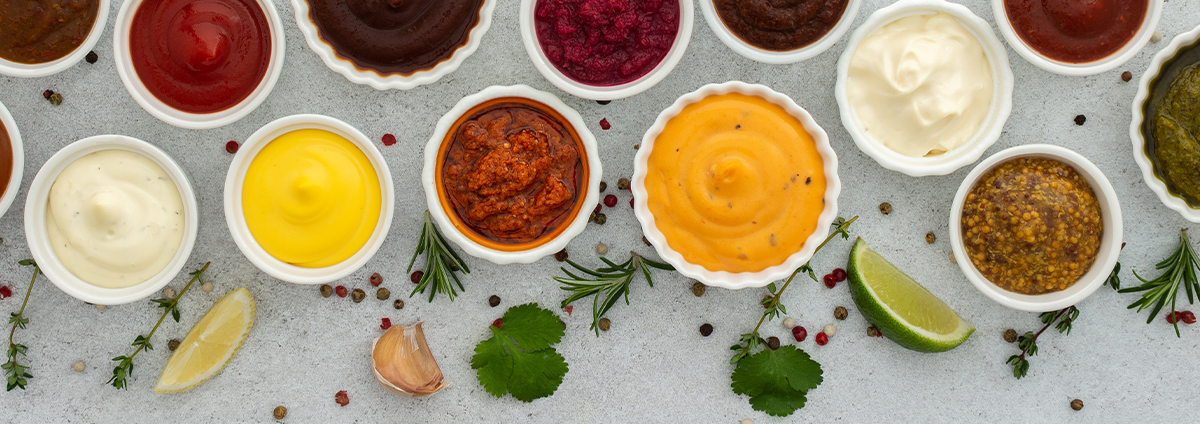Seasoning the Future: How Doypack is Transforming Sauce Packaging
The packaging landscape for sauces is undergoing a significant transformation. Stand-up pouches, commonly known as doypacks, are quickly outstripping traditional glass and plastic jars in popularity. But why are these pouches becoming the preferred choice for sauces and condiments?
The answer lies in their superior convenience, availability, and their low carbon footprint. As a result, doypacks are emerging as a preferred packaging solution, reflecting both market trends towards eco-friendly products and the ongoing evolution of consumer preferences.
Market Trends and Consumer Preferences
The global usage of stand-up and flat pouches is expected to increase significantly, with their market value projected to grow to $47.0 billion by 2029. This significant surge is primarily driven by the food industry. A key factor in this growth is the expansion of e-commerce, which not only has diversified packaging formats but also requires adaptations to meet the dynamic demands of online shopping. This evolution in e-commerce is closely linked to the development of more intricate and distinctive pouch designs, as reported by Smithers.
In this dynamic, the sauces market is experiencing significant expansion, both globally with a forecast growth that is expected to reach over $109.5 billion by 2028, but especially in the United States, China and Latin America countries, where this market has been experiencing the most growth. Similarly to the stand-up pouches market, this robust growth is driven largely by a rising consumer inclination towards convenience. Indeed, this trend is manifesting in an increased demand for ready-to-eat and easy-to-prepare sauce products. The demand for packaged sauces, dressings, and condiments is flourishing, fueled by the growing preference for quick and easy meal solutions that do not compromise on taste or quality.
Doypack take over: Revolutionizing the Sauces Market
As anticipated, the evolution of packaging within the sauce industry is marked by the introduction of innovative pouch solutions—stand-up pouches, or doypacks—which are designed to minimize food waste and reduce dependency on traditional glass containers. These pouches are engineered for efficiency, enabling consumers to extract every last ounce of sauce with ease, without the necessity for utensils. This shift not only simplifies the consumption process but also significantly cuts down on the consumer's residual waste typically left in rigid packaging forms.
Moreover, stand-up pouches can often incorporate aseptic and clean technologies, ensuring that the sauces remain fresh and safe for consumption over extended periods without refrigeration. This is a crucial development, especially as it eliminates the need for costly cold chain logistics, which traditionally have placed a substantial financial burden on the distribution process. Indeed, today's consumers are increasingly seeking out sauces that not only enhance flavor but also offer nutritional benefits. This shift poses a challenge for sauce manufacturers to maintain the integrity of taste and nutritional content amidst the demands for longer shelf life and widespread distribution.
Convenience Meets Sustainability
As the flexible packaging industry evolves, there is, of course, also an increasing emphasis on sustainability, leading to the development of pouch formats that comply with strict design-for-recyclability guidelines. The industry faces challenges, particularly with materials such as laminates that incorporate aluminum foils, which are complex to recycle.
This shift toward flexible packaging is particularly relevant to the sauces market and their packaging, marking a significant stride toward greener solutions in this industry. Indeed, this type of packaging not only reduces the carbon footprint during production but also improves the efficiency of material use when compared to more traditional rigid packages, like glass bottles and jars. Additionally, the growing preference for doypack packaging in the sauce industry allows end consumers to actively participate in sustainable practices. This preference is fueled by the packaging's user-friendly design and its potential for complete recyclability.
Leading the Way in Doypack Packaging Innovation
As the market continues to embrace flexible packaging, Volpak emerges as a renowned industry expert, bringing unparalleled expertise to the rapidly evolving sauce industry. With a deep understanding of the technical requirements specific to various product consistencies, Volpak excels in recommending the optimal dosing systems and nozzles tailored to the viscosity and density of each sauce or condiment.
Our machines are designed and built with hygienic and wash-down designs to meet the specific sanitary needs of each customer, ensuring that they are perfectly suited for the food industry's rigorous standards. Having carved a niche in the pet food market, particularly with dry treats and wet foods, Volpak's experience easily translates into the sauce packaging sector, with machines that are equipped to handle both room temperature dosing and high-temperature dosing—crucial for maintaining sauce quality during packaging. Furthermore, Volpak implements advanced temperature control systems that ensure each product is packaged under optimal conditions to maintain freshness and extend shelf life. This commitment to quality and precision in meeting production needs makes Volpak a pivotal player in the industry.
In an era where convenience and environmental responsibility are paramount, Volpak's technological innovations support the sauces industry’s shift towards more sustainable packaging solutions, without having to sacrifice packaging efficiency or final product quality.
Explore how Volpak's advanced technology and industry expertise can elevate your presence in the sauces market. Contact us today to transform your packaging solutions.
SOURCES
The Future of Pouch Packaging to 2029, Smithers, 2024.
Cooking Ingredients and Meals, Euromonitor, 2024.
